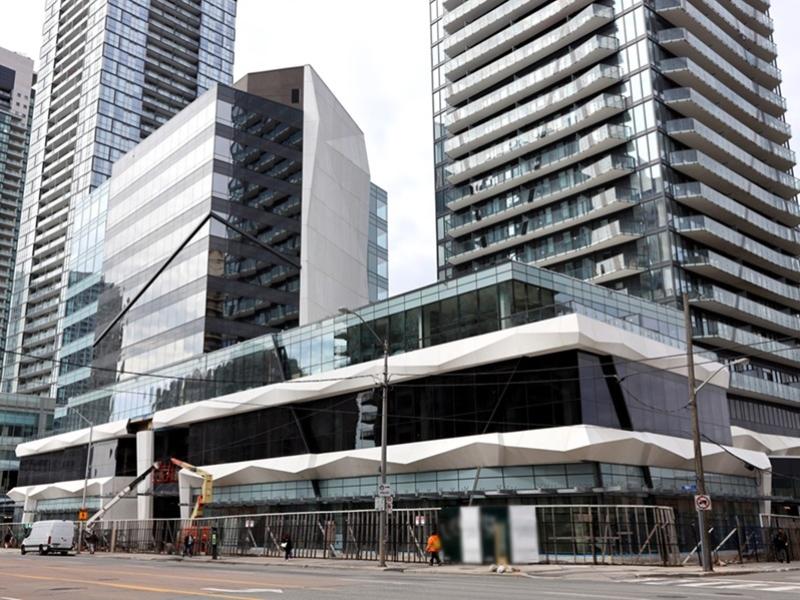
Construction costs remain elevated across Canada following pandemic-related supply chain disruptions that sent prices soaring, but slowing activity in Ontario has allowed that province to buck the ongoing national trend.
Cost increases through 2024 and early this year in Ontario have been in line with broader inflation, according to Altus Group’s newly released 2025 Canadian Cost Guide.
Construction costs are influenced by both global and local economic conditions, market trends and advances in building materials, practices and methods. All of these factors were taken into consideration in the annual guide.
Data was derived from:
- 2,745 multiresidential projects encompassing over 990 million square feet and valued at $197 billion;
- 3,048 industrial, commercial and investment projects encompassing over 534 million square feet and valued at $139 billion; and
- 450 infrastructure projects valued at $185 billion.
“We've seen increases in Atlantic Canada, Vancouver and Alberta,” Altus Group head of development advisory for the Americas Colin Doran told RENX in an interview, which also included vice-president and economic strategist Peter Norman.
Ontario's slowdown, and tariff impacts
The construction slowdown in Ontario, however, is expected to continue through 2025.
“There was very, very competitive bidding for trades in 2023 and 2022 that's just gotten softer as the volume of activity, particularly on the residential side, has softened,” said Norman, who expects an even sharper drop in construction volume this year.
At this point there’s too much uncertainty to predict the potential impact of the rapidly evolving U.S.-Canada tariffs battle.
About eight per cent of the total cost of construction is spent on materials imported from the U.S. While this limits the upside cost risks, these imports focus on products and construction activities that will experience more disruptions if the dispute lingers.
“Prices might go up quite a bit for some of those materials, but you're looking at a small piece of the pie that's subject to those price pressures, and you've got an opportunity to substitute away from them in some cases,” Norman explained.
Norman said higher import costs will flow through to construction projects right away, but “as time moves on, you could get some substitution into other types of materials and things like that, that could have either an upward or downward influence on price.”
The price of Canadian lumber, for example, is expected to soften as exports to the U.S. slow.
Labour talks, building code revisions, soft costs
Negotiations with labour unions for various trades are happening this year and Norman believes slower construction activity will swing the balance of power away from unions.
“But the way that labour costs flow through into a project often has a lot more to do with the bidding by the trade sub-contractors than the actual hourly labour agreements,” he added.
Anticipated building code revisions are expected to add complexity to budgeting and forecasting - and perhaps a few percentage points to project costs.
Soft construction costs could be reduced as more municipalities either have or are considering freezing or lowering development charges and other fees to kick-start development.
“Often a crisis brings about real policy changes where they need to be made, and that's something I expect to see more of as we go through 2025 and ’26,” Norman said.
He expects interest rates to drop another 50 to 75 basis points by the end of this year, which should also lower soft costs.
Doran cautioned some development projects may still not be feasible even with potentially lower costs. Norman added that construction costs will likely play a smaller role in deciding whether to move forward with projects than challenges on the demand side.
Construction costs across Canada
Costs in Vancouver are expected to climb slightly higher in 2025 due to building code and building performance improvements, higher labour costs and material availability.
Land cost remains a key issue for project feasibility and simple low- to mid-rise rental buildings close to transit perform best in the city.
Construction costs are generally up in Calgary and Edmonton, with year-over-year increases in both material costs and labour. Higher labour costs are due in part to the lack of qualified workers for specific trades.
On average, costs have declined in Toronto due to a drop in building activity and lower demand. Private sector prices moved slightly lower, with highrise residential seeing a bigger drop than commercial due to availability of contractors.
However, pricing for resale and existing buildings is still cheaper than new construction. Pro formas are more feasible for warehouses, data centres and, to a lesser extent, rental apartments benefitting from government incentives and rebates.
Ottawa’s overall private sector construction costs went down, while public sector costs are mostly flat to slightly higher. However, Canada Mortgage and Housing Corporation-funded projects are the only financially feasible developments in the private sector.
Montreal construction costs are up. Warehouse and low- and mid-rise apartment buildings are still in high demand and have seen the most activity and increased costs.
Labour shortages and market uncertainty have raised construction costs in Halifax and Saint John, N.B. The increased frequency of natural disasters is also requiring more resilient building construction standards.







